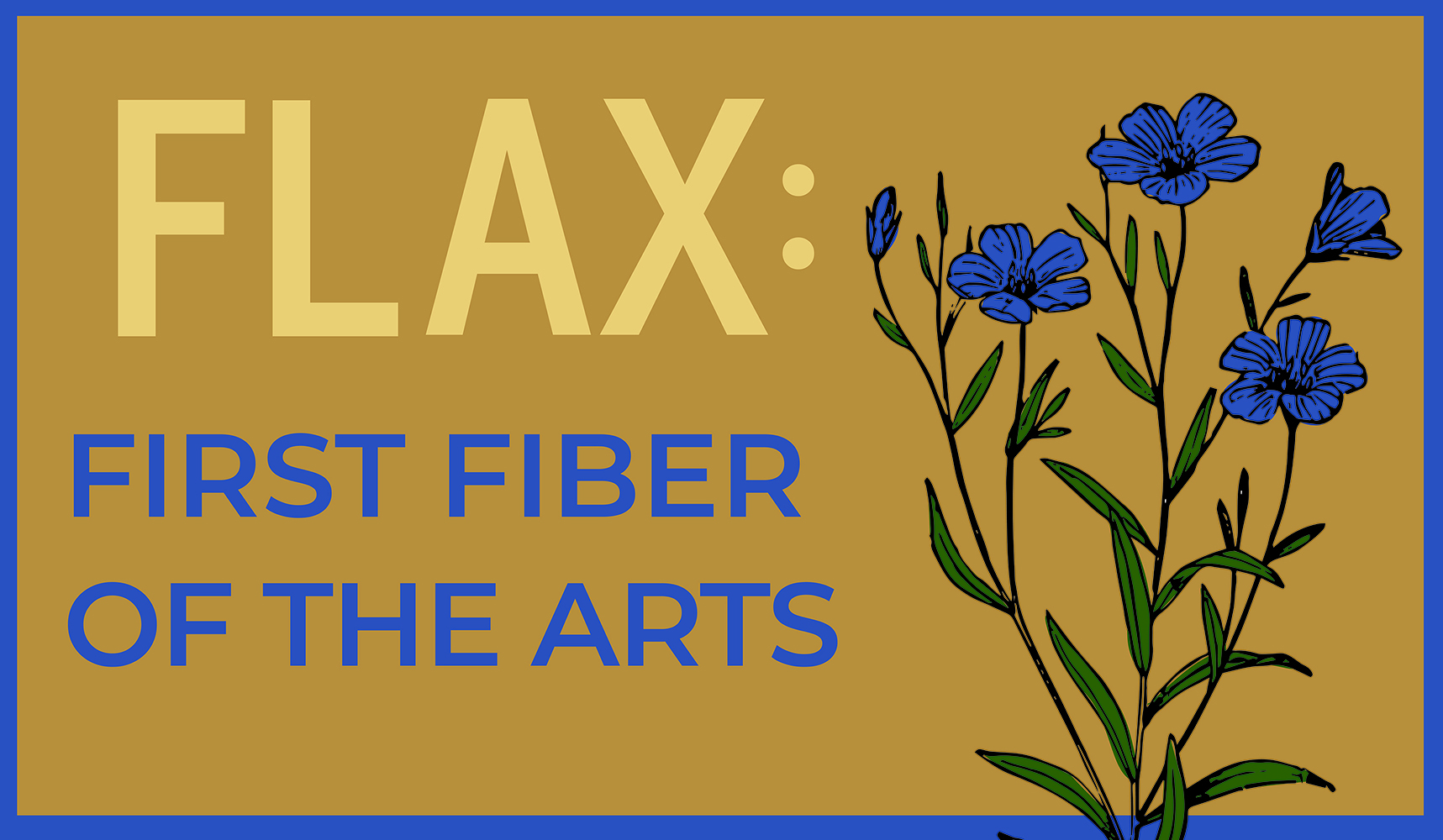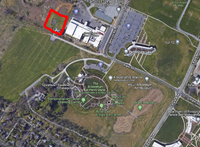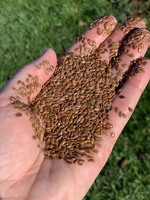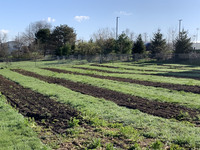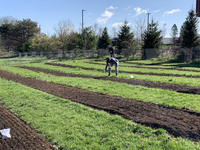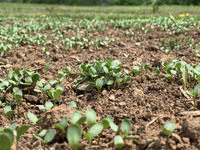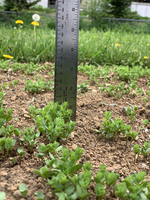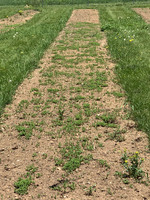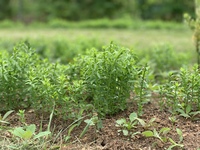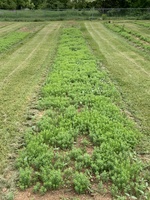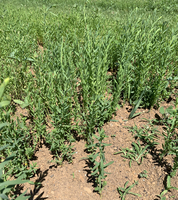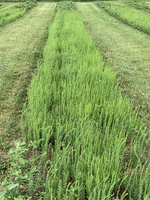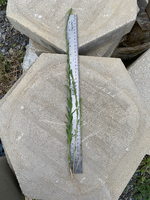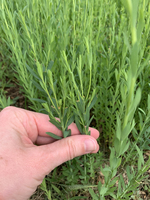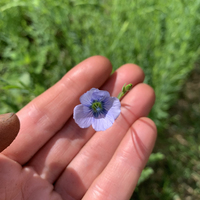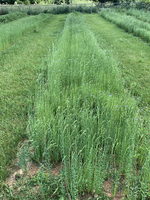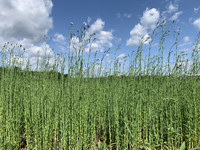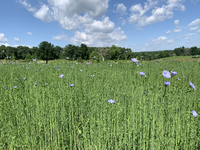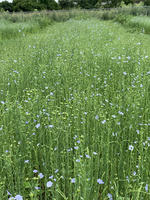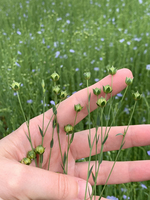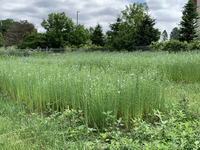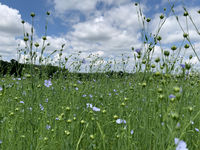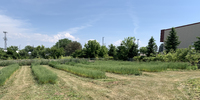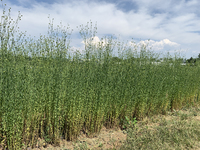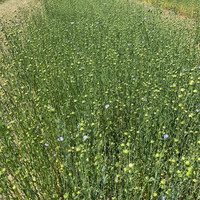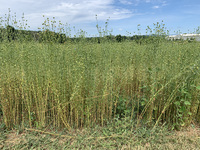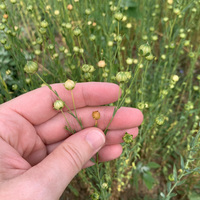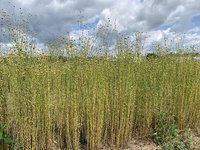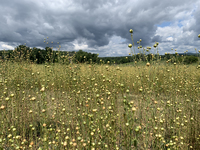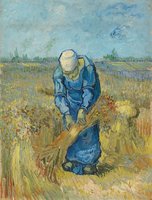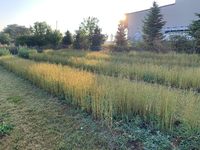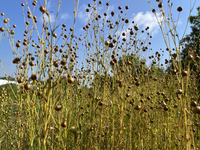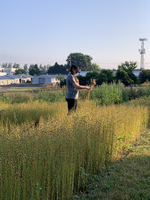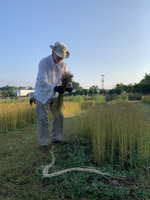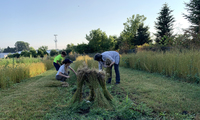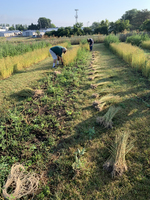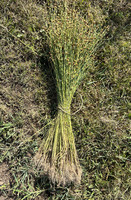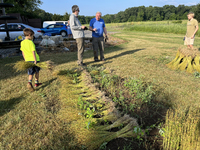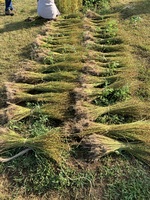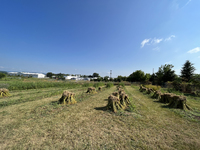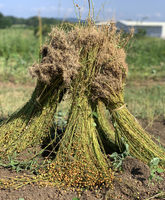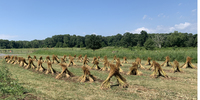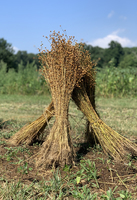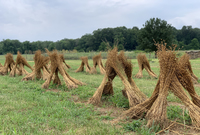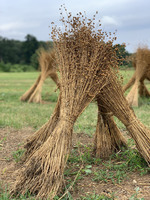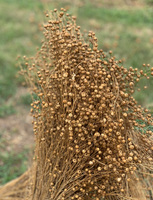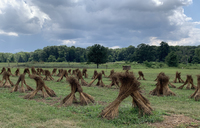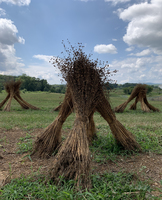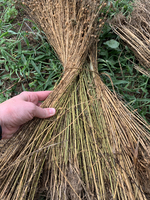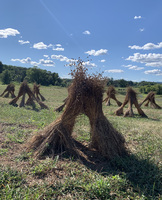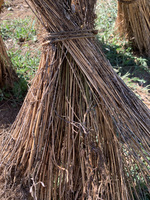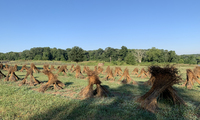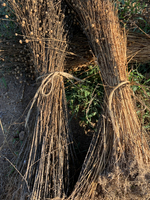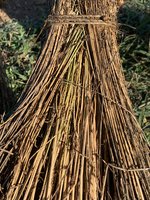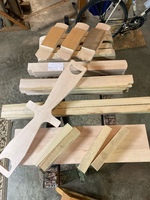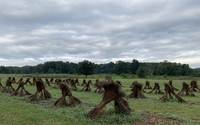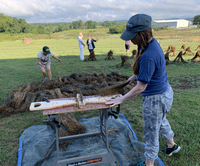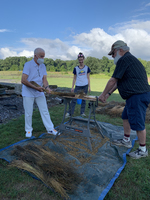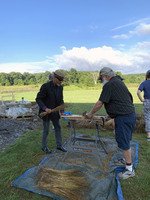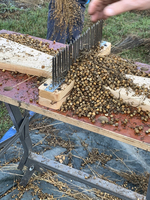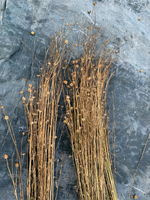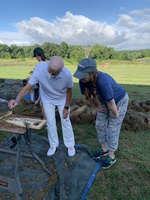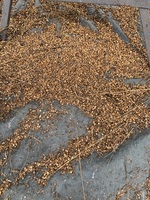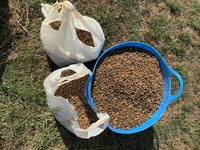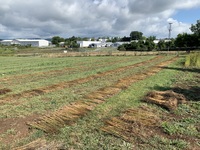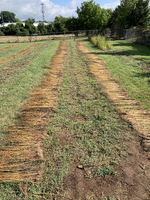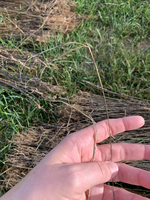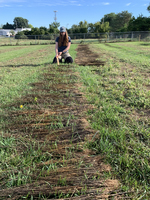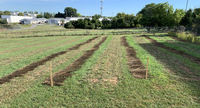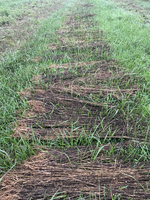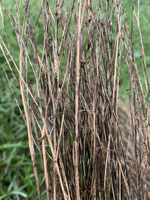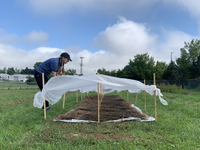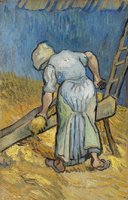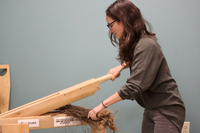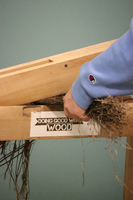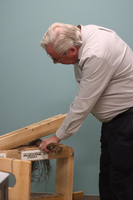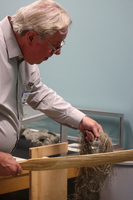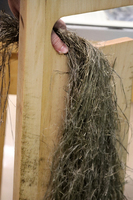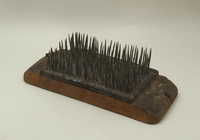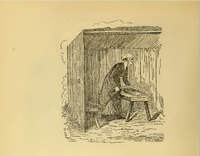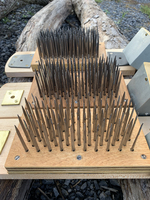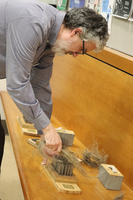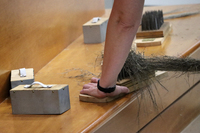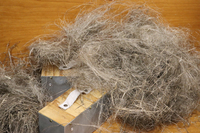Growing Flax
The flax plant is adaptable to a variety of soils and climates but grows best in well-drained sandy loam and in temperate climates. In most areas planting of the same land with flax is limited to once in six years to avoid soil exhaustion. Cool moist growing seasons produce the most-desirable fiber. From seed to harvestable plant takes between 90 and 110 days.
The Center would like to thank the Arboretum at Penn State for the use of land, help in planting, and maintaining the field of flax. We would also like to thank Doing Good with Wood for building the tools used to process the flax.
For a historical take on cultivating flax in Pennsylvania read "Flax culture in Lancaster County" by Dr. J. W. Houston.
There are six major steps to cultivating and processing flax before it can be made into thread and used in weaving. Below is a section on each along with images and photographs explaining the process.
Sowing Harvesting Rippling Retting Breaking Hackling
Sowing
Eight pounds of seed to cover 1/16 of an acre were purchased from Landis Valley Village & Farm Museum and were sown on April 22nd. One pound of seeds can cover a 17 by 17-foot area. The seeds should be sown densely so the plant grows with little branching, producing a better fiber.
April 22 (Day 1)
April 29 (Day 7) and May 5 (Day 14)
May 13 (Day 22)
May 25 (Day 34) and June 3 (Day 43)
June 10 (Day 50)
June 17 (Day 57)
June 24 (Day 64)
July 1 (Day 71)
July 8 (Day 78)
July 14 (Day 82)
Harvesting
Harvesting takes place around 20 days after full blooming. The lower third of the flax stalk will be yellow, and some seed pods will not have ripened. For a better quality of linen, the stalks should be harvested before the seed pods ripen. The whole plant must be pulled up, not cut at the roots, to maximize the length of the fiber. The plants are pulled out and bound together until the whole harvest is complete. The bound flax can be arranged in stooks in the field to dry.
July 19 (Day 87)
Harvesting the flax started at 7am and included 15 volunteers working for 3 hours. The group harvested almost 200 bundles of flax to dry.
July 22 (Day 90)
The flax bundles have now been arranged in 49 stooks, seed head up to dry.
July 29, 2022 (Day 97)
The interior of the flax bundles are still slightly green.
August 5 (Day 104)
Outside of the flax is hard and brown but the interior of the bundles is yellow.
August 12, 2022 (Day 111)
August 19, 2022 (Day 118)
Tool Construction
The team at Doing Good with Wood built the flax tools from plans purchased from The Woolgatherers. Once the harvest season is complete the tools will be stored at the Pasto Agricultural Museum.
Rippling
After the flax stalks have had a chance to dry completely the seed heads must be removed. This can be done by beating the bundles over large rocks or pulling the plants through a rippling comb. The seeds can be saved to replant for next year. The flax can now be stored in a dry place until you are ready for the next step.
Rippling the flax took place on August 23, 2022. A dozen volunteers showed up to help. The flax bundles were wet since there had been rain over the last week and some already showed signs of rotting. We collected over a bushel of flax seed heads to be dried and processed separately.
Retting
This step can take from one to three weeks and is the process of rotting the stalks to break down the pectin that holds the plant together. There are two ways to ret the flax.
One, the stalks can be laid out in a field in a thin layer to be dew retted. This process can take three to six weeks depending on temperature and rain. If weather is dry the flax might need to be watered every few days. This process produces a darker color of flax.
Two, is water retting the flax by submerging it in a clean stream or container of water. The flax will need to be weighted down and the water will need to be changed regularly to keep down the smell. This process is faster and produces a lighter color of flax.
Retting is complete when you can break the stalks and see the flax fibers inside.
Once the retting is complete the flax needs to dry again and then can be stored indefinitely before breaking and scutching.
August 23 and 26, 2022
Aftering rippling the flax is laid out to dew ret (rot). We will check every few days on when to flip the flax or when it will be ready to be gathered up and dried.
September 2, 2022 (1 week of retting)
After seven days of retting we flipped the flax. The underside of the flax did look more retted, darker in color and black. Some of the flax might already be ready to be dried.
September 9, 2022 (2 weeks of retting)
After a week that had several days of rain the flax appears to be retted and ready to dry.
September 13-16, 2022
The flax is dry enough to be moved to storage.
Breaking and Scutching
Breaking the flax loosens the outer rotted stalk, while scutching is the process of separating the loose bark from the fibers. Both can require specialized tools: a wooden break or brake and a scutching knife.
A flax break is a set of hinged intersecting wooden blades, which looks like a sawhorse. A handful of flax is placed on the brake between the upper and lower arm. The upper arm is lowered, crushing the stems and breaking the inner woody core. The flax is repositioned, and the process is repeated. You can also break the flax by hand. Grab one stem at a time in the middle, break, then wiggle it and gently peel the fibers from the inner core on one side, and then on the other side. Alternatively, you can use a mallet or rolling pin or simply walk over the flax.
A scutching (swingling) knife is a wooden blade-like device that is used in conjunction with a vertical board placed into the ground to rest the flax stalks as you swing up and down, knocking loose the broken stalk.
In September 2022 CVMS held an Open House and invited guests to process some of the dry flax. Unfortunately, weather and the academic calendar forced cancellations of two scheduled public events. The dry flax is being stored until a time can be scheduled for an event outdoors.
Hackling or Heckling
A heckle (hetchel) is a bed of iron "nails" to clean and straighten the fibers. The flax is drawn through the heckle to remove the small, shorter fibers (tow). The finer the yarn required, the more times this must done, using a finer toothed comb each time.
After heckling, flax can be spun to make it suitable for weaving into linen.
